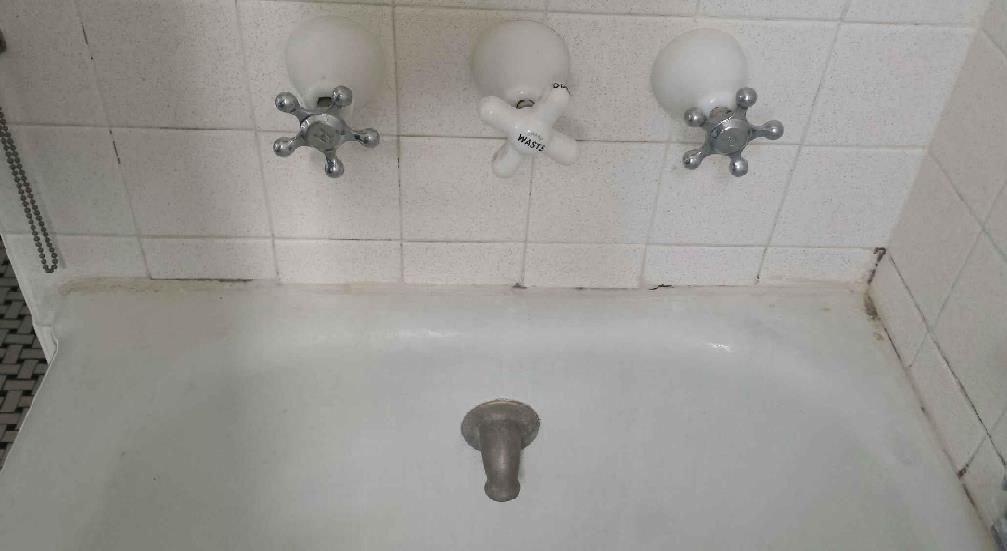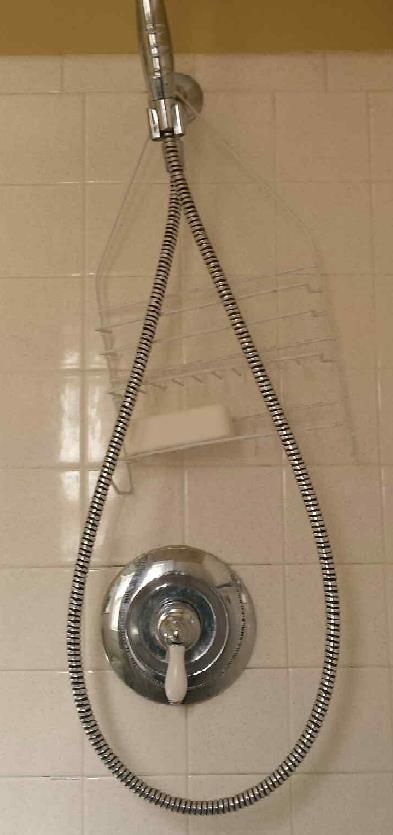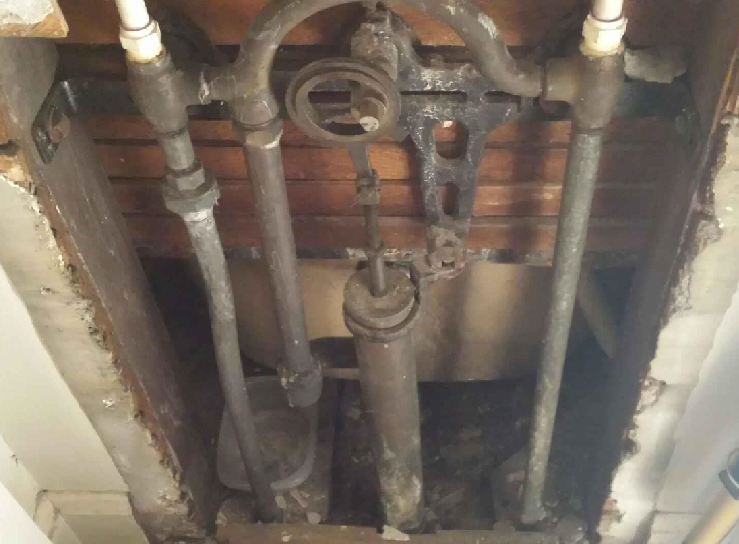So I moved into a nearly 100 year old house at the end of June, and noticed a small problem with the bathtub; the hot-water nob needed to be tightened very hard to get it to turn off entirely. This wasn't really an issue, but as time went on I had to turn harder and hard, and eventually it would leak even if not turned off all the way. Then, about a week ago, it started just pouring like it was about 1/4 of the way on no matter what I do, and now I have to shut down the hot water in the basement to shut it down.
Called a plumber last week, and after an immense amount of issues there, they told me that everything needs to be replaced and that it will cost over $1000. Wow. Well, I've since learned that this plumber has a reputation for gouging people with elaborate setups where simpler fixes work, so I figured I'd try to learn a thing or two about this. So here I am!
Here are some images of my setup:



Yes, it is quite old. Two knobs (with screws off to the side to hold the knob itself on), one drain-control knob in the center (which doesn't work well, but that's not a huge deal), one little/old faucet, and then a single-handle control shower up above. The last image is of the access behind it just to give more context.
Does anyone have any advice for this setup, or at least know what this is called so that I can look it up? $1000 for this issue really seems exorbitant, and is more than a bit out of my budget.
Thanks much in advance for any advice or direction!
Called a plumber last week, and after an immense amount of issues there, they told me that everything needs to be replaced and that it will cost over $1000. Wow. Well, I've since learned that this plumber has a reputation for gouging people with elaborate setups where simpler fixes work, so I figured I'd try to learn a thing or two about this. So here I am!
Here are some images of my setup:



Yes, it is quite old. Two knobs (with screws off to the side to hold the knob itself on), one drain-control knob in the center (which doesn't work well, but that's not a huge deal), one little/old faucet, and then a single-handle control shower up above. The last image is of the access behind it just to give more context.
Does anyone have any advice for this setup, or at least know what this is called so that I can look it up? $1000 for this issue really seems exorbitant, and is more than a bit out of my budget.
Thanks much in advance for any advice or direction!
Last edited:














![MEISTERFAKTUR drain snake 2.0 [50 FT] - with drill attachment - Ideal plumbing snake for sink and drain unblocking - Solid drain auger for real DYIs! (50 FT - 1/4 inch)](https://m.media-amazon.com/images/I/41VwmTiOsgL._SL500_.jpg)















































